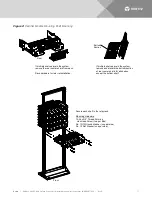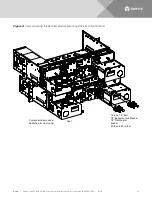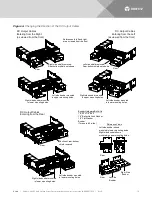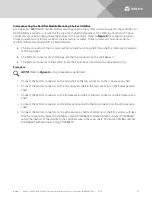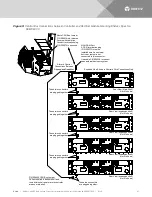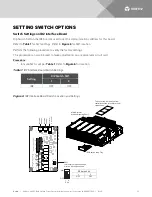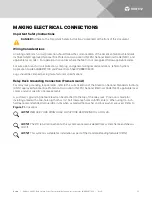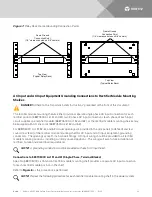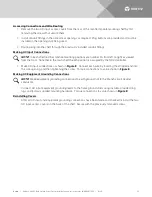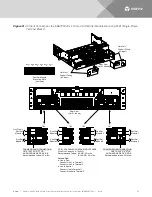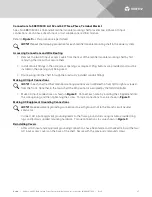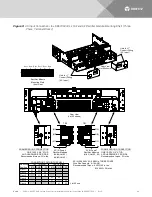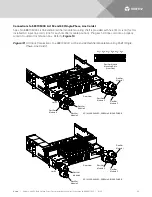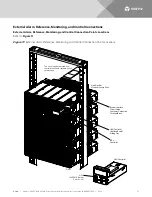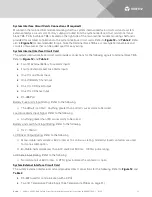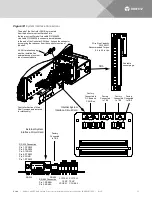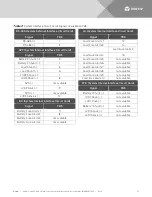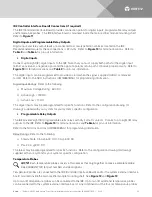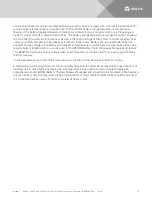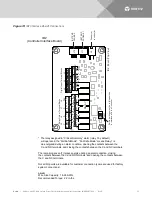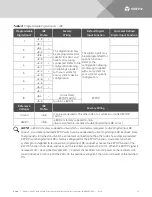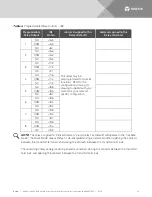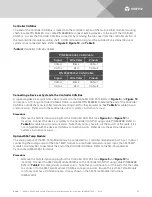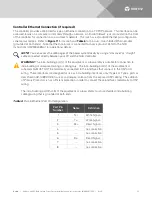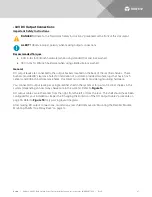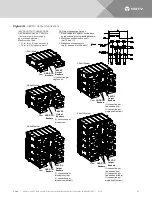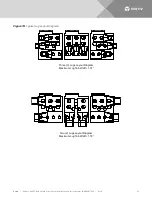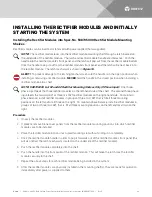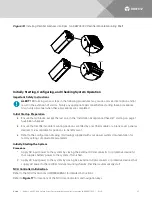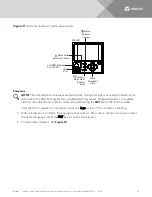
Vertiv
|
NetSure -48V DC Bulk Output Power System Installation and User Instructions (UM582127100)
|
Rev. E
31
System Interface Circuit Cards Connections (if required)
Mounted in the main rectifier module mounting shelf is a system internal interface circuit card and a system
external interface circuit card. Factory cabling is routed from the system interface circuit cards to terminal
block TB5. Terminal block TB5 is located on the right side of the main rectifier module mounting shelf and is
provided for customer connections to the system interface circuit cards. Refer to
Figure 12
. Refer
also to
Figure 12
for recommended torque. Note that terminal block TB5 is a screw-type terminal block and
consists of two pieces that can be pulled apart for easy wiring.
System Internal Interface Circuit Card
The system internal interface circuit card provides connections for the following signals to terminal block TB5.
Refer to
Figure 12
•
Two (2) External Battery Fuse Alarm Inputs
•
Four (4) External Load Fuse Alarm Inputs
•
One (1) Load Shunt Input
•
One (1) Battery Shunt Input
•
One (1) LVD Driver Output
•
One (1) LVD Sense Input
•
RS-485 Port
Battery Fuse Alarm Input Rating: Refer to the following.
a)
The default is 400mV. Anything greater than 400mV causes alarm to be raised.
Load Fuse Alarm Input Signal: Refer to the following.
a)
Anything greater than 19V causes alarm to be raised.
Battery and Load Shunt Input Rating: Refer to the following.
a)
1mV – 150mV.
LVD Driver Output Rating: Refer to the following.
a)
Mono-stable, normal state is 60V or less at 1A continuous rating. Normally closed contactors are used
for mono-stable option.
b)
Bi-Stable, normal state less than 60V and 2A at 500ms – 1000ms pulse rating.
LVD Sense Input Rating: Refer to the following.
a)
Normal state is at 60V or less. A RTN signal indicates the contactor is open.
System External Interface Circuit Card
The system external interface circuit card provides direct connections for the following. Refer to
Figure 12
and
•
RS-232 (used for communication with a DPU)
•
Two (2) Temperature Probe Inputs (See Temperature Probes on page 21.)

